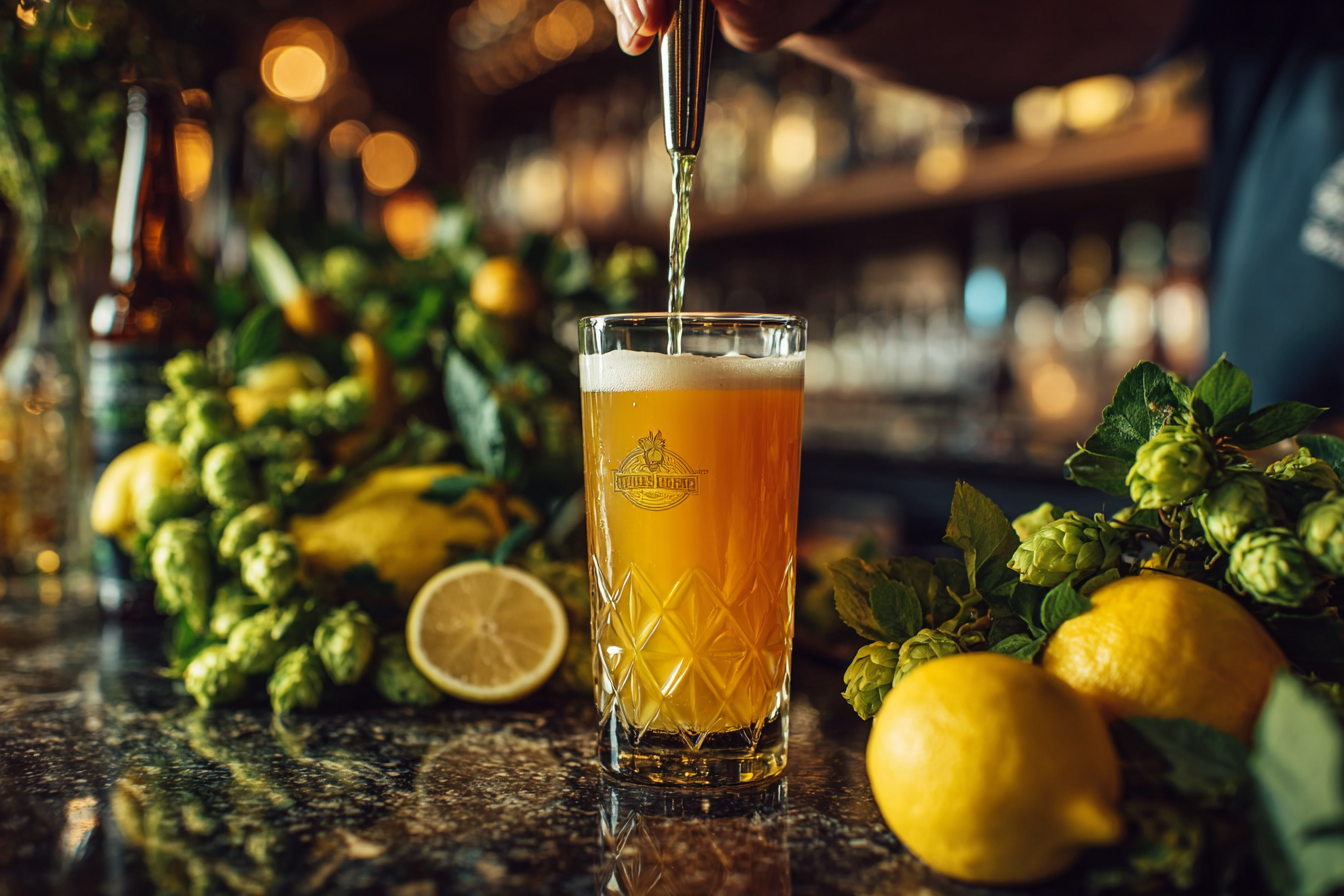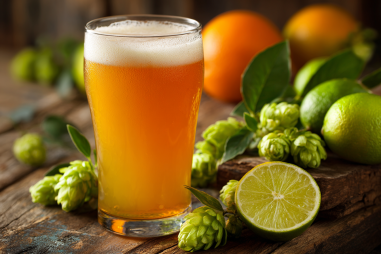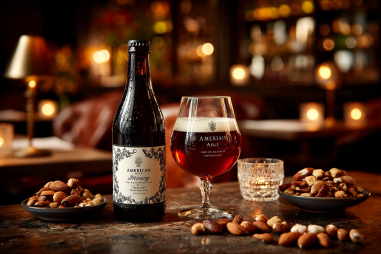Sour IPAs are a fascinating fusion of tartness and hoppiness, offering beer lovers a unique tasting adventure. However, to fully appreciate their complex profile, serving techniques play a crucial role. Properly poured and served, a sour IPA can delight your palate with an ideal balance of acidity and bitterness while showcasing bright aromas and flavors. Whether you’re a seasoned craft beer enthusiast or a curious newcomer, understanding how to serve sour IPAs correctly will elevate your drinking experience to new heights.
The Importance of Pouring Technique
Pouring a sour IPA isn’t just about getting beer into a glass; it’s an art that influences the flavor, aroma, and appearance of your brew. The ideal pour helps release the vibrant aromas trapped inside the bottle or can while maintaining the right balance of carbonation.
When pouring sour IPAs, it’s best to tilt your glass at about a 45-degree angle and pour gently down the side. This method reduces excess foam while still allowing some head to form, which is essential for preserving aromas and adding visual appeal. As you near the end of the pour, gradually straighten the glass to create a nice foamy head roughly one to two inches thick. This foam acts as a protective layer, maintaining carbonation and preventing the beer from oxidizing too quickly.
Additionally, pouring slowly helps avoid agitation, which can release too much acid or hop bitterness at once and alter the intended balance. Take your time and enjoy the ritual—it’s as important as tasting itself.
Best Glassware Choices
Choosing the right glassware enhances both the sensory and aesthetic qualities of a sour IPA. The shape of the glass affects how aromas are concentrated and how the flavors hit your palate.
- Tulip Glass: This is often considered the optimal choice for sour IPAs. With its inward-curving lip and bulbous body, the tulip glass traps volatile aromas and directs them to your nose while supporting a stable head for that rich nose of hops and acidity.
- Snifter: Similar to the tulip, a snifter’s wide bowl and narrow top excel at focusing complex aromas, making it a fine option for high-ABV or intensely sour brews.
- Weizen Glass: Though traditionally for wheat beers, its tall shape with a slight funnel at the top can showcase the carbonation and produce an inviting foam head for more effervescent sour IPAs.
- Avoid common pint glasses: While convenient, typical pint glasses often lack the shape needed to concentrate aroma, which is an essential element for appreciating sour IPAs.
Optimal Serving Temperatures
Serving temperature is critical because temperature affects how flavors and aromas are expressed in your sour IPA.
The ideal serving range for sour IPAs is generally between 45°F to 55°F (7°C to 13°C). At this temperature, the beer’s acidity and hop bitterness balance nicely, letting both shine without overwhelming your palate. If served too cold, flavors and aromas are muted, making the beer taste flat or overly carbonated. On the other hand, too warm and the sourness can become too sharp, losing subtle fruitiness and hop complexity.
To achieve the right temperature, transfer your beer from the fridge a little before serving, or if you’re storing it cellar-cold, briefly leave it out for a bit to warm up. Using a beer thermometer or smart serving fridge can help perfect this process.
Storage and Freshness Considerations
Sour IPAs are often delicate due to the interaction of wild yeast, bacteria, and hops. How you store them significantly affects their freshness and overall quality.
- Keep them cool and dark: Store sour IPAs in a refrigerator or cool cellar away from sunlight, as UV light can cause “skunky” flavors that overpower the sour and hop notes.
- Avoid temperature fluctuations: Constantly changing temperatures cause premature aging and flavor deterioration.
- Mind the shelf life: Unlike some other sour styles, sour IPAs usually taste best when consumed fresh, ideally within a few months of packaging.
- Upright storage: Store the bottle or can upright to minimize oxidation and contamination from sediment.
Following these guidelines preserves the integrity of your sour IPA, making each sip as vibrant as the brewer intended.
Enhancing Aroma and Flavor
Aroma and flavor are the hallmark features of a good sour IPA, where bright citrus, piney hops, and a tart backbone come together in harmony. To amplify these characteristics:
- Swirl gently: Before sipping, swirl the beer lightly in your glass to release volatile aroma compounds without over-agitating it and causing excessive carbonation loss or bitterness spike.
- Use your nose: Take a moment to inhale deeply and savor the complex bouquet of earthy hops, fruity esters, and tangy sourness.
- Small sips: Sour IPAs can have a high-intensity flavor profile. Enjoy small sips that allow your taste buds to navigate the interplay of acidity, malt sweetness, and hop bitterness.
Pairing Serving Tips
The tart and hoppy profile of sour IPAs makes pairing a delightful challenge. When serving beer with food, consider these tips to highlight your brew’s best traits:
- Cheese: Sharp cheddar, goat cheese, or even blue cheese pairs well, as their creaminess contrasts nicely with tartness.
- Spicy food: Sour IPAs cut through heat with their acidity, complementing dishes like spicy Thai or Mexican cuisine.
- Grilled seafood: The briny flavors of grilled shrimp or oysters combined with a bright sour IPA create a refreshing match.
- Fruit-forward desserts: Tart sorbets or citrus-based sweets echo the beer’s sour notes without overpowering.
Serving beer slightly chilled – not ice cold – alongside these foods will maintain balance and maximize enjoyment.
Common Mistakes and How to Avoid Them
Avoid these pitfalls to ensure your sour IPA experience is consistently excellent:
- Pouring too aggressively: This can create excessive foam or release sourness too quickly, disrupting flavor balance.
- Serving too cold: Masks aroma and flavors, making the beer taste dull and one-dimensional.
- Using the wrong glassware: Missed aroma delivery affects overall enjoyment.
- Ignoring freshness: Drinking stale beer will dull the unique sour hop character.
- Mixing sour IPAs with overly heavy or fatty foods: This can overwhelm the beer’s delicate profile.
By understanding these common missteps, you set the stage for a more rewarding sour IPA experience.
Elevate Your Drinking Ritual
Serving sour IPAs with intention and care turns every sip into a celebration of flavor, aroma, and craftsmanship. From selecting the perfect glassware and achieving the ideal pour, to mastering temperature and pairing alongside complementary foods, these small but meaningful details amplify the magic behind this distinct beer style.
Next time you open a sour IPA, treat it as more than just a drink—embrace it as a sensory journey that happens in both the glass and on your palate. Savor the tartness, admire the hop complexity, and revel in the fresh vibrancy that only proper serving can unlock. Cheers to drinking your sour IPA like a pro!







